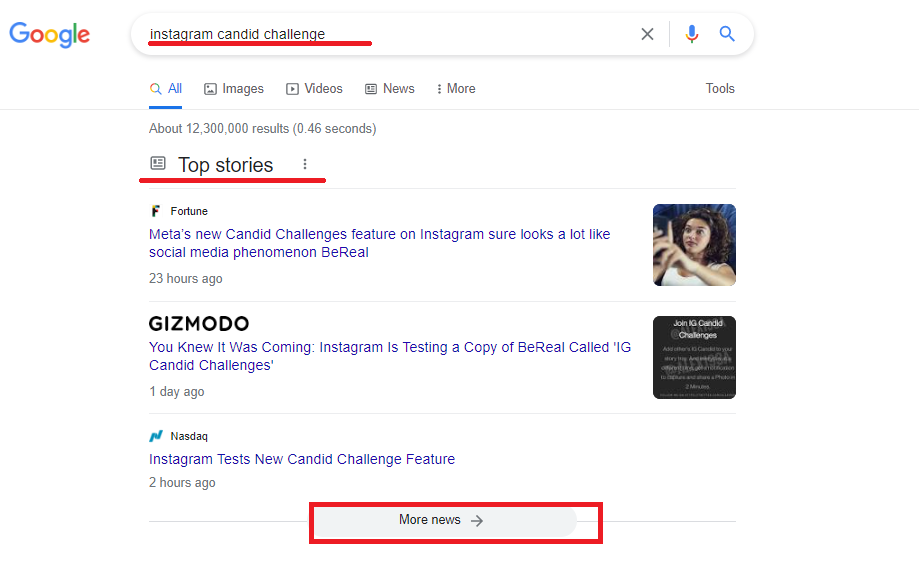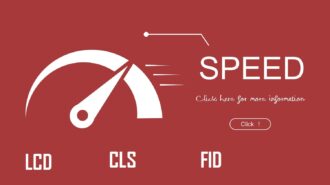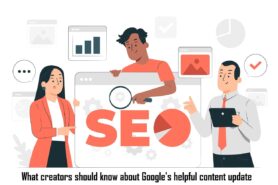Google changed the image guidelines for Top Storie’s eligibility and updated its Article structured data (Schema Markup) guidelines to reflect the removal of the AMP requirement. Three revisions to the standards make it apparent that more publishers are now eligible for the stop stories area, which can dominate the top of search results.
Top Stories Don’t Need Structured Data
Top stories are a way for Google to highlight new news articles in search results. Searches on hot news subjects will guide the top stories section, which appears at the top of the search results in sizes large enough to dominate the screen on mobile and desktop searches.
Result of a Top Stories in Google Search

Top stories can alternatively be displayed lower down in the middle of the page. As a result, being featured in top stories is critical for sites that provide breaking news.
Schema Markup Data Not Necessary for Top Stories
It’s worth noting that Google updated the language to the first paragraph of the Article structured data guidelines to emphasize that structured data isn’t required to appear in top stories.
The following is the new paragraph:
“By adding Article structured data to your news, blog, and sports article pages, Google can learn more about the web page and display better title text, images, and date information for the article in search results on Google Search and other properties” (for example, Google News and the Google Assistant). While no markup is required to be eligible for Google News services such as Top stories, you can add Story to more explicitly inform Google what your content is about (for example, that it’s a news piece, who the author is, or what the article’s title is).”
Whether this has always been the case, or if this is a new development, it is noteworthy since it demonstrates that Google’s defined standards are less restrictive and more inclusive.
This means that news sources that do not include article structured data are nonetheless eligible to feature in top stories.
This is also true for other upgraded listings. So it’s only natural that Google’s Top Stories documentation will follow suit, no longer requiring structured data to qualify.
However, providing structured data, particularly Article Schema.org structured data, is still a best practice because it allows publishers to make it easier for Google to interpret the web pages.
Google eliminates AMP references
Accelerated Mobile Pages (AMP) is a framework for creating HTML pages that load incredibly quickly on mobile devices.
Using AMP was once required in order to get included in top stories.
That is no longer the case, and Google content updated the structured data rules for the Article to reflect the change.
Google did not just alter the standards to incorporate AMP and non-AMP data. Google removed all AMP references from the structured data specifications.
Publishers who use AMP no longer have access to the structured data guidelines for the Article.
“AMP will no longer be necessary for stories to be featured in Top Stories on mobile; it will be open to any page.”
published an advance notice
Change To Top Stories Image Guidelines
Another, perhaps most significant, adjustment makes inclusion in top stories easier to achieve.
The image size has been changed. Google reduced the picture size requirement, which may benefit publishers by allowing them to use smaller images and earn higher page performance scores.
Previously, Google’s structured data specifications for photographs demanded high-resolution photos with at least 800,000 pixels when the width and height were multiplied.
The following are the guidelines before and after the change.
Before:
“For optimal results, offer numerous high-resolution photos (minimum of 800,000 pixels when width and height are multiplied) with the following aspect ratios: 16×9, 4×3, and 1×1.”
After:
“For optimal results, offer multiple high-resolution photos (minimum of 50K pixels when width and height are multiplied) with the following aspect ratios: 16×9, 4×3, and 1×1.”
Top Stories Guidelines
These changes may appear minor on the surface. They are, nonetheless, significant.
The entire elimination of any advice for AMP publishers is a little strange. It’s almost as though Google is backing away from AMP.
Google’s modification to the image rules for top articles is a nice change because it encourages users and publishers to utilize reduced picture sizes.





